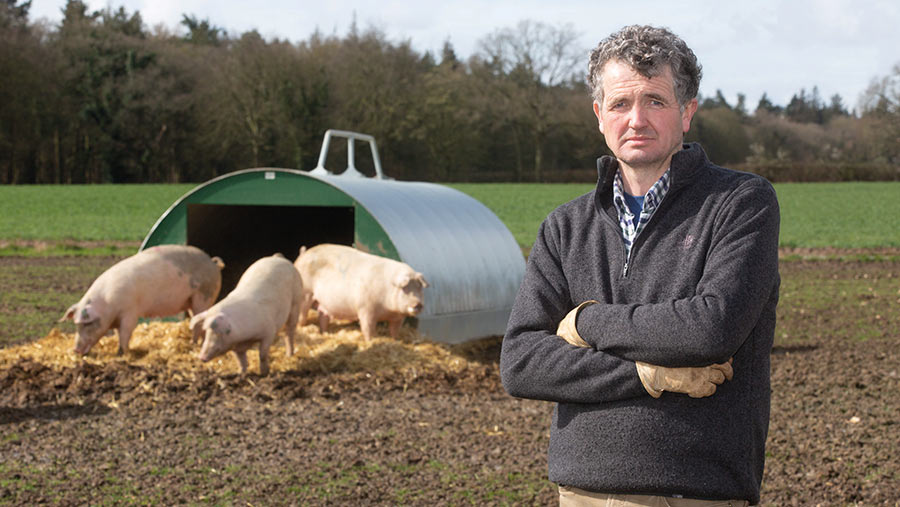Farmer Focus: System changes again to wean older piglets
 © Tim Scrivener
© Tim Scrivener Over the course of the past two decades the way we operate our outdoor sow herds has seen some very big advances.
First, we stopped farrowing sows in communal groups of six or seven and started farrowing them individually, so each sow gets her own paddock with an ark, feeder, water tank and wallow.
This gives us much better sow and litter management.
Following that, we stopped using boars for natural service and became 100% reliant on artificial insemination (AI) for sow mating, relying on them only to catch sows that return at the three-week stage.
See also: 3 ways to maximise piglet growth at farrowing
Having successfully converted to a system based on AI for sows, we expanded it to include gilt services.
At the same time we changed from a weekly farrowing routine to a three-weekly-farrowing batch system.
That was a big development at the time and it took a while to be embraced by breeders who were accustomed to farrowing, weaning and serving small groups of sows every week.
The three-week batch system required us to spend a full week focused on farrowing three times more sows than previously.
The second week involves a mass weaning of four-week-old piglets, while the third week of the cycle is spent rebreeding all the sows that were weaned the previous week and are staying in the herd.
Weaning four-week-old piglets in a three-week-batch system has been the accepted default for nearly all breeding units in recent years, but things are changing again.
As of last week, we have entered a transition period during which we will convert both our breeding units to a two-week batch system and our piglet age at weaning will rise to five weeks.
We are not the first to make this change – and learning from the experiences of those who have already done it has been very helpful in putting clear, structured plans in place.
I hope that as each new two-week batch of sows becomes established, what currently feels like a bit of a production jumble will progress into an efficient production system with many advantages.

